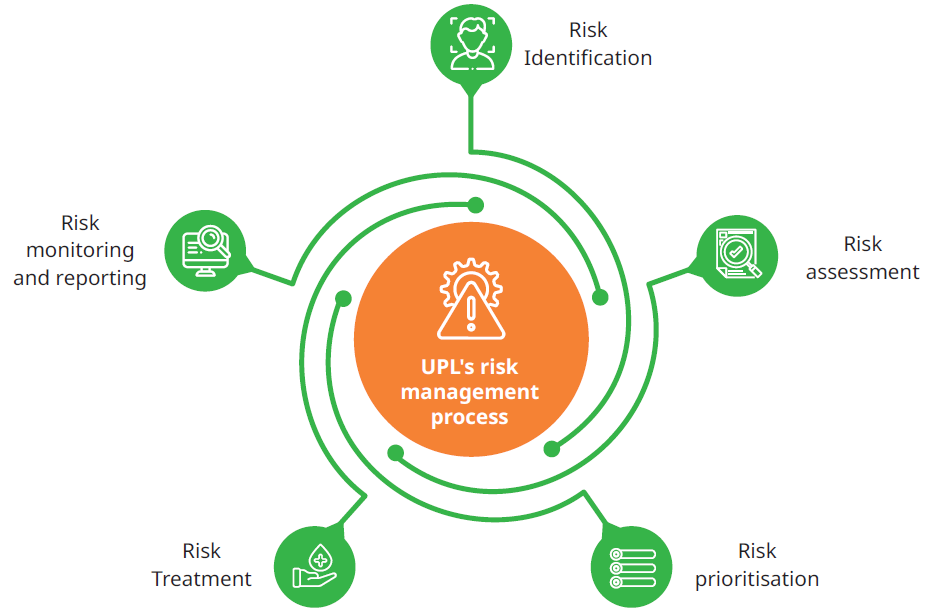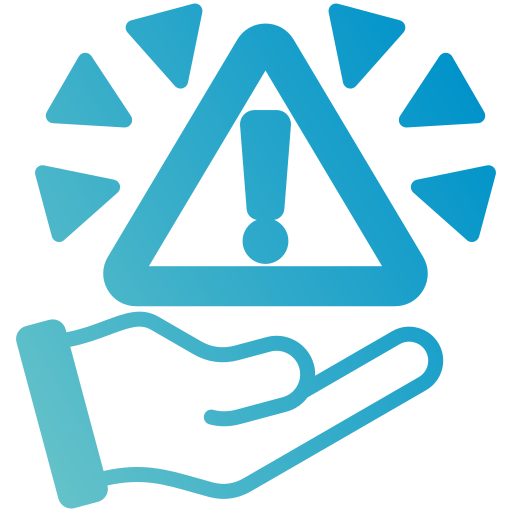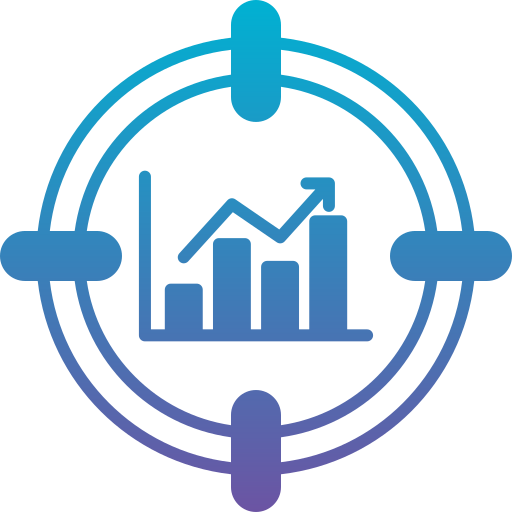Risk Management
Risk management is an essential aspect of UPL’s strategy and decision-making process. We identify assess and mitigate potential risks that could impact the achievement of our objectives. It helps us safeguard our assets, reputation, and financial stability. Effective risk management enables UPL to make informed and confident choices, anticipate potential challenges and seize growth opportunities. It also ensures compliance with regulations and enhances our stakeholder confidence.
Mitigating Risks Effectively
Given the inherent risks in the agrochemicals industry, UPL recognizes the crucial need for effective risk management as a core component of our strategy. As a global organization, we have identified a wide array of risks and implemented appropriate mitigation measures to ensure the seamless execution of our strategy. By doing so, we enhance our capacity to generate sustainable value for our stakeholders, while aligning with our vision to collaboratively build a resilient and sustainable global food system.
Risk Management Process
We at UPL have established a robust and integrated risk management system to consistently evaluate, assess, and monitor significant risks associated with our business activities. Our risk management process is aligned with our strategic objectives, considers emerging megatrends, incorporates input from internal and external stakeholders, and includes industry-specific analysis. This system adheres to internationally recognized risk management standards, such as ISO (International Organization for Standardization) and COSO (Committee of Sponsoring Organizations of the Treadway Commission).

Emerging Risks
UPL identifies risks including emerging risks in various categories, such as strategic, external, and preventable risks. It also monitors the health of risks in a proactive manner that provide early warning indicators to the relevant stakeholders. We take cognizance of risks faced by our key stakeholders and their cumulative impact while framing our risk responses. The Risk Register is revisited periodically to ensure that the risks remain relevant at any point in time and corresponding mitigation measures are effective. This provides a proactive and value adding review process which enables maintaining the risk profile at an acceptable level in a rapidly changing environment. UPL operates in a dynamic sector, thus it has a formal documented way of identifying, assessing, and reviewing emerging risks. It uses horizon scanning for early detection of emerging risk such as the implications of the recent geopolitical crisis and its effects associated therewith on UPL.
UPL’s Top Two Emerging Risks
Business Continuity/ Resilience
- Risk Category: Others
Description:
- Inadequate formal business resilience framework (including availability, training and testing of Business Continuity Plan, Crisis Management Plan, Emergency Response Plan, Process safety Risk Management etc.) may lead to sub-optimal response to unforeseen and catastrophic events (such as Process Safety events, supply chain disruption, extreme weather events, natural disasters or other widespread health emergencies, civil unrest, etc.) causing operational disruptions and financial impact
-
Impact:
- - Operational
- - Financial
- - Reputational
- - People
- - Environmental
- - Legal/ Regulatory
Mitigating actions
Preventive and Mitigation main actions to control Process Safety events are as mentioned below :
1. Identification of High Risk Processes and Operations across the Indian manufacturing units. Control on All High Risk Processes and Operations by following structured methodolgy of LOPA with continous tracking and updation as per the requirements
2. All changes are managed by Risk Assessment through Management of change procedure
3. New Project are assessed through Process Safety Stage Gate Approach (Starts from Product development, concept phase, basic engineering, detail engineering upto comissioning and plant startup) for structured risk assesssment
4. Process Safety Event reporting (as per API 754) process ensures management of Leading and Lagging indicators to minimize incidents
5. Safety Cultural Transformation initiatives and CFT's effective management with Line control
6. Continous training and competence building programs
7. Scrubbers management, Gas Mapping and Detectors with actions in place wherever risk of toxic release involved etc..
8. Regular Mock drills (Onsite and Offsite) to ensure readiness on handling actual emergency
9. Risk Management review for Tolling processes
10. Process Safety Assurance by regular Audits - UPL Units as well as Sustainability Audits of Vendor units
Artificial Intelligence
- Risk Category: Technological
Description:
- Lack of a unified IT and AI governance framework, coupled with limited awareness of emerging AI technologies and their ethical use, may lead to unregulated adoption or misuse of AI tools by employees, partners, or third-party collaborators resulting in compromised data integrity, IP exposure, and significant legal and reputational damage
-
Impact:
- - Operational
- - Reputational
- - Legal/ Regulatory
- - Financial
Mitigating actions
- 1. Developed and rolled out an AI Acceptable Use Policy to all employees and obtained their acknowledgments.
- 2. Developed an AI Security Risk Management Framework to govern AI strategy, operations, and risks.
- 3. As part of ongoing cybersecurity awareness training, AI-specific risks and training sessions are provided to employees and vendors.
- 4. Implemented a Third-Party Risk Management process to assess the risks of vendors engaged in AI for UPL.
- 5. Established a security assessment methodology and procedure to evaluate and mitigate risks associated with AI and AI applications.














